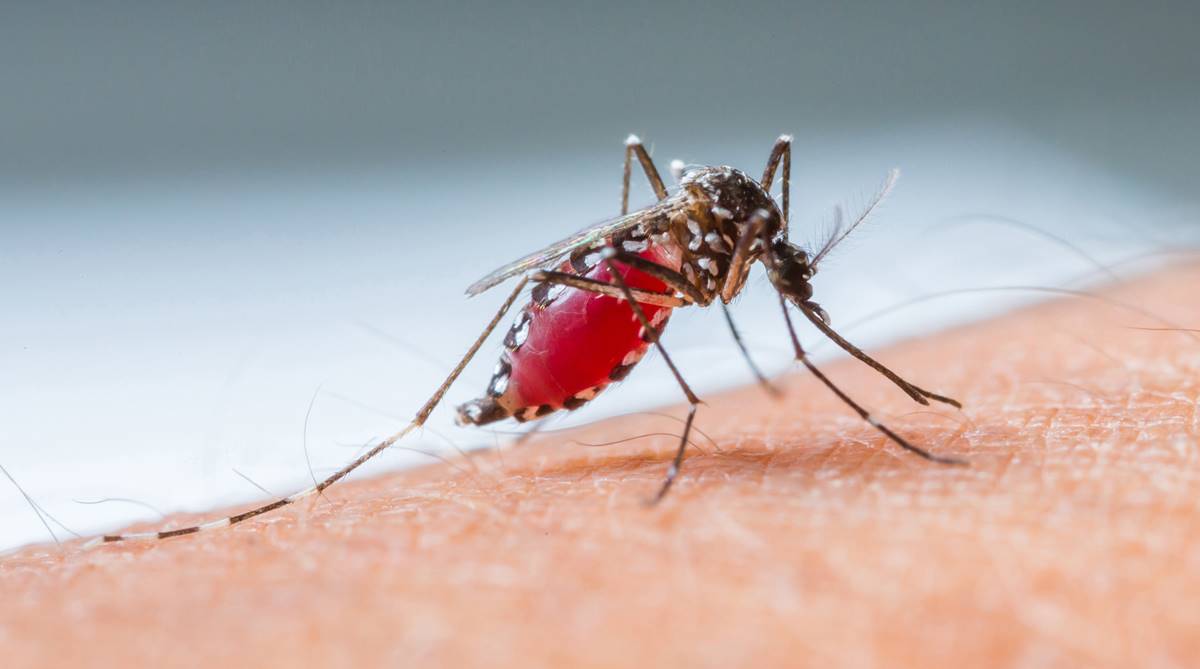It was long known that the whine of the female mosquito beating her wings was the signal for the male mosquito that romance was at hand. But it was believed the sound had to be really close at hand, as mosquitoes could not hear from more than a few centimetres.
In a paper in the journal, Current Biology, Gil Menda, Eyal I Nitzany, Paul S Shamble, Amelia Wells, Laura C Harrington, Ronald N Miles and Ronald R Hoy, from the universities of Cornell, Chicago, Harvard, New York (at Binghamton) and Northwestern University, report that the male mosquito, in fact, can hear his lady in flight from over 10 metres! This has implications, both in understanding the anatomy of the mosquito as well as in design of microphones and audio receptors.
The mosquito, like most small insects, does not have a compound ear, with a tympanum, or eardrum, and resonating cavities to amplify sound. These are the devices that make for the great sensitivity and range of the ears of mammals. The human ear, for instance, can hear sounds where the variations of air pressure are less than one billionth of the atmospheric pressure. And there are animals that better this by far, both in the sensitivity to faint sounds and the range of frequencies of sound.
The paper says that the mating behaviour of the species of mosquito that was studied takes place midair, and accompanied by two-way exchange of sound signals, with matching of the pitch of the tones, at short range, of millimetres to centimetres. As this exchange took place at short distances, it has been assumed, the paper says, that the range of the arrangement of hairs, or antennae, with which the mosquito receives sound information, must be sensitive only in the short range. The male mosquito has antennae whose ends are furry, and divided into hairs. As early as 1855, it has been proposed that these hairs were the structure that enabled the mosquito to sense sound.
In a 1999 paper in the journal, Experimental Biology, MC Gopfert, H Briegel and D Robert reported that this structure, in both the male and the female mosquito, was tuned to maximum sensitivity at specific pitch of sound. In the case of the male, this was at nearly the frequency of the wing movement of the female, which in turn, is in the same range as human speech. The hair structures were also coupled with the antenna shaft and thence with the organs of hearing. This was seen to enhance sensitivity to feeble sounds and the male mosquito was not just more sensitive than the female but better than all other insect-like creatures that have bony outer ear structures.
Another paper in 2000, in the journal of the Royal Society by Gopfert and Robert, identified the sensory organs at the base of the antennae that led to extraordinary sensitivity, in both male and female mosquitoes. Even the less sensitive female organ responded to deflections of antennae by just 0.0005 degrees, induced by displacements of air particles in the sound field by just 11 millionths of a millimetre.
These investigations, which were carried out using lasers and the Doppler effect, where the frequency of light rises or falls when a reflecting surface moves, gave rise to the possibility that mosquitoes may use sound for long range communication, the current paper says. In the case of mammals and larger animals, the auditory function has an important role and the dimensions of the animals have permitted the evolution of sensitive hearing organs. Insects and smaller creatures, on the other hand, rely mainly on scents or chemical signals, and this sense has evolved to great sophistication. That the mosquito could be sensitive to feeble sounds from a distance would come as a surprise.
The current researchers hence undertook to see from what distance the male mosquito could detect the flight sound of a female. There was an older study, of 1948, where it had been found that the male mosquito quickly took flight and moved towards a tuning fork that was sounded, from a distance of one to ten centimetres, at a tone of 400 cycles per second. The methods used were adapted to the current study and controlled experiments carried out, using both recorded sounds of same species, female mosquitoes as well as generated pure tones. “The acoustically triggered flight behaviours demonstrate that male Ae. aegypti (the mosquito species) respond briskly and instantaneously to supra-threshold flight tones (at about 400 cps) of conspecific females, even at distances of three metres,” the paper says.
To confirm whether this behaviour was in fact a result of sound reception, the stimulation of the physical organ at the base of the mosquito antennae was monitored at the time the sounds were played. The stimulation was recorded using a tungsten micro-electrode that was introduced into the relevant nerve of the mosquito. The nerve responses were recorded while the sounds were played, at different loudness and pitch and random intervals, and the timing of responses was matched. The paper reports that the nerve response followed the pattern of behaviour response, to suggest that it was the sound that triggered the flight response of the male mosquitoes.
While these experiments had been made with sounds from a distance of three metres, because of the confines of the sound-proof experimental chamber, they were repeated with arrangements for greater distance. Now, again, it was found that the nerve activity was seen even when the sound source was 10 metres away.
There has been a concept that the “near field”, where sounds can be effective, is about one-third of the wavelength of the sound. In the case of a 400 cps tone, the wavelength is about 90 cms. The near-field range would thus be some 30 cms. But a distance of three metres is 10 times as much and a distance of 10 metres is 33 times as much. It is hence time, the paper says, to let go of the notion that it is tympanal (eardrum based) hearing that works for the far-field and hair-based hearing is for the nearfield.
The result throws open new behaviour analyses of insects and possibly new methods of mosquito control. The sensitivity to sound at frequency that matches human speech suggests that sound may be a device, in addition to smell and sensing warmth, which draws mosquitoes to humans. Better understanding of the anatomy of the mosquito may also clarify its place and role in the environment. And apart from this, there is the technological consequence, of using hair-based devices for detection of feeble sounds, where conventional diaphragm-based methods are not feasible.
(The writer can be contacted at response@simplescience.in)










